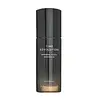What's inside
What's inside
 Key Ingredients
Key Ingredients

 Benefits
Benefits

 Concerns
Concerns

No concerns
 Ingredients Side-by-side
Ingredients Side-by-side

Water
Skin ConditioningGlycerin
HumectantPropanediol
SolventCaprylic/Capric Triglyceride
MaskingGlycereth-26
HumectantAlcohol Denat.
Antimicrobial1,2-Hexanediol
Skin ConditioningNiacinamide
SmoothingChondrus Crispus Extract
Skin ConditioningXylitylglucoside
HumectantChlorella Vulgaris Extract
Skin ConditioningSaccharum Officinarum Extract
MoisturisingXylitol
HumectantSaccharomyces Ferment Filtrate
HumectantGanoderma Lucidum Extract
Skin ProtectingInonotus Obliquus Extract
Skin ConditioningTuber Melanosporum Extract
HumectantButylene Glycol
HumectantPolyacrylamide
Hydrogenated Lecithin
EmulsifyingGlyceryl Stearate
EmollientPEG-100 Stearate
Ammonium Acryloyldimethyltaurate/Vp Copolymer
Dimethicone Crosspolymer
Emulsion StabilisingGlucose
HumectantC13-14 Isoparaffin
EmollientAnhydroxylitol
HumectantVinyldimethicone
Fructooligosaccharides
HumectantFructose
HumectantIsododecane
EmollientLaureth-7
EmulsifyingEthylhexylglycerin
Skin ConditioningAdenosine
Skin ConditioningPalmitic Acid
EmollientSodium Phytate
Stearic Acid
CleansingTocopherol
AntioxidantDipropylene Glycol
HumectantPentylene Glycol
Skin ConditioningCaprylyl/Capryl Glucoside
CleansingCeramide NP
Skin ConditioningCetearyl Alcohol
EmollientXanthan Gum
EmulsifyingParfum
MaskingWater, Glycerin, Propanediol, Caprylic/Capric Triglyceride, Glycereth-26, Alcohol Denat., 1,2-Hexanediol, Niacinamide, Chondrus Crispus Extract, Xylitylglucoside, Chlorella Vulgaris Extract, Saccharum Officinarum Extract, Xylitol, Saccharomyces Ferment Filtrate, Ganoderma Lucidum Extract, Inonotus Obliquus Extract, Tuber Melanosporum Extract, Butylene Glycol, Polyacrylamide, Hydrogenated Lecithin, Glyceryl Stearate, PEG-100 Stearate, Ammonium Acryloyldimethyltaurate/Vp Copolymer, Dimethicone Crosspolymer, Glucose, C13-14 Isoparaffin, Anhydroxylitol, Vinyldimethicone, Fructooligosaccharides, Fructose, Isododecane, Laureth-7, Ethylhexylglycerin, Adenosine, Palmitic Acid, Sodium Phytate, Stearic Acid, Tocopherol, Dipropylene Glycol, Pentylene Glycol, Caprylyl/Capryl Glucoside, Ceramide NP, Cetearyl Alcohol, Xanthan Gum, Parfum
Ingredients Explained
These ingredients are found in both products.
Ingredients higher up in an ingredient list are typically present in a larger amount.
Adenosine is in every living organism. It is one of four components in nucleic acids that helps store our DNA.
Adenosine has many benefits when used. These benefits include hydrating the skin, smoothing skin, and reducing wrinkles. Once applied, adenosine increases collagen production. It also helps with improving firmness and tissue repair.
Studies have found adenosine may also help with wound healing.
In skincare products, Adenosine is usually derived from yeast.
Learn more about AdenosineChondrus Crispus Extract comes from a red algae native to the northern Atlantic coasts of Europe and North America. It helps hydrate the skin and is rich in antioxidants.
The antioxidants in chondrus crispus include lutein and zeaxanthin. Lutein has the ability to filter blue light from screens.
Other contents of chondrus crispus include polysaccharides, peptides, and amino acids. These help hydrate the skin.
What's the difference between algae and seaweed?
Algae is a broad term that includes seaweed. Not all algae is seaweed.
Glycereth-26 is a synthetic ingredient and polyethylene glycol ether of Glycerin. Glycerin is already naturally found in your skin and helps keep your skin moisturized.
It is a humectant and helps add texture to products. It can make your product thicker.
As a humectant, it helps draw moisture from the air to your skin. This helps your skin stay hydrated.
Learn more about Glycereth-26Niacinamide is a multitasking form of vitamin B3 that strengthens the skin barrier, reduces pores and dark spots, regulates oil, and improves signs of aging.
And the best part? It's gentle and well-tolerated by most skin types, including sensitive and reactive skin.
You might have heard of "niacin flush", or the reddening of skin that causes itchiness. Niacinamide has not been found to cause this.
In very rare cases, some individuals may not be able to tolerate niacinamide at all or experience an allergic reaction to it.
If you are experiencing flaking, irritation, and dryness with this ingredient, be sure to double check all your products as this ingredient can be found in all categories of skincare.
When incorporating niacinamide into your routine, look out for concentration amounts. Typically, 5% niacinamide provides benefits such as fading dark spots. However, if you have sensitive skin, it is better to begin with a smaller concentration.
When you apply niacinamide to your skin, your body converts it into nicotinamide adenine dinucleotide (NAD). NAD is an essential coenzyme that is already found in your cells as "fuel" and powers countless biological processes.
In your skin, NAD helps repair cell damage, produce new healthy cells, support collagen production, strengthen the skin barrier, and fight environmental stressors (like UV and pollution).
Our natural NAD levels start to decline with age, leading to slower skin repair, visible aging, and a weaker skin barrier. By providing your skin niacinamide, you're recharging your skin's NAD levels. This leads to stronger, healthier, and younger looking skin.
Another name for vitamin B3 is nicotinamide. This vitamin is water-soluble and our bodies don't store it. We obtain Vitamin B3 from either food or skincare. Meat, fish, wheat, yeast, and leafy greens contain vitamin B3.
The type of niacinamide used in skincare is synthetically created.
Learn more about NiacinamideSaccharomyces Ferment Filtrate is created from fermenting Saccharomyces, a yeast also known as baker's yeast or brewer's yeast.
As a humectant, Saccharomyces Ferment Filtrate helps draw moisture from the air to your skin to keep your skin hydrated. The humectant properties comes from its beta-glucan content.
This ingredient is also called sugarcane extract. It is a moisturizing humectant and has skin soothing properties.
Similar to hyaluronic acid, sugarcane can attract moisture to your skin.
Glycolic acid is a derivative of sugarcane. While glycolic acid is an AHA with exfoliating properties, sugarcane is not an AHA.
A study from 2021 found the compounds in sugarcane extract to have antioxidant, antimicrobial, and anti-inflammatory activity. The study also suggests these compounds can inhibit skin ageing enzymes and promote collagen synthesis.
Learn more about Saccharum Officinarum ExtractWater. It's the most common cosmetic ingredient of all. You'll usually see it at the top of ingredient lists, meaning that it makes up the largest part of the product.
So why is it so popular? Water most often acts as a solvent - this means that it helps dissolve other ingredients into the formulation.
You'll also recognize water as that liquid we all need to stay alive. If you see this, drink a glass of water. Stay hydrated!
Learn more about Water